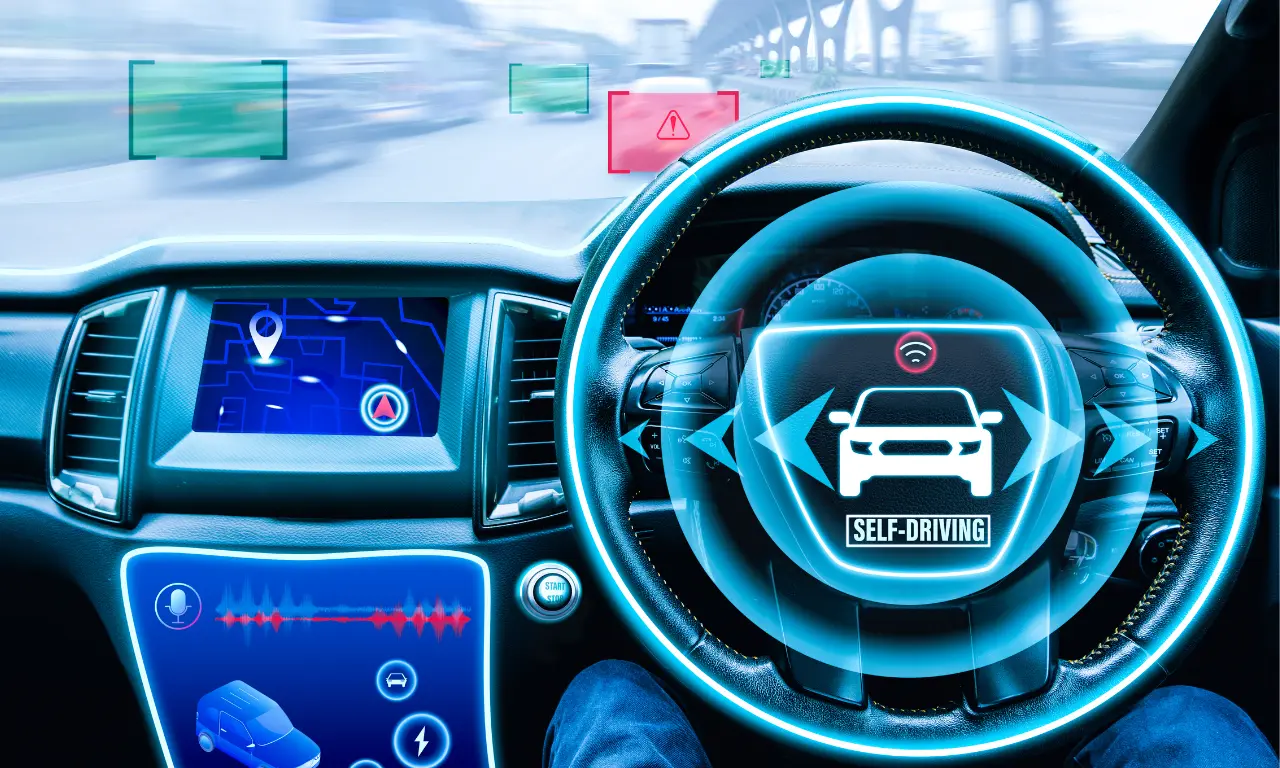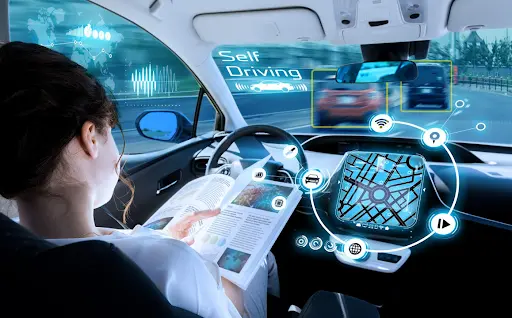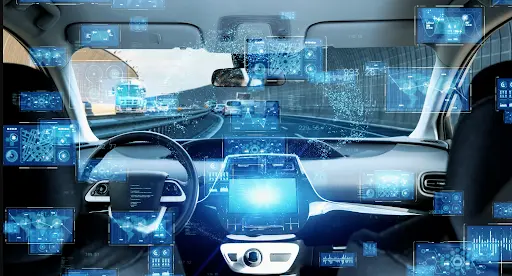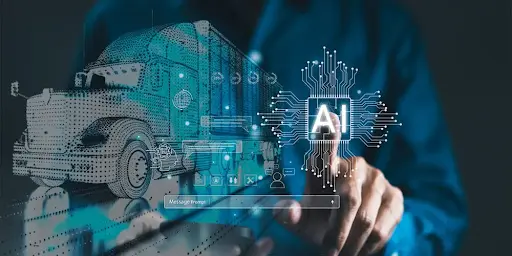How Agentic AI is Transforming the Automobile Industry

Software now shapes more vehicle value than steel does, yet most automotive AI still reacts rather than thinks ahead. Agentic AI flips that script.
Imagine an onboard agent that predicts a battery fault weeks before it strands a driver, or a factory planner that reroutes chip shortages overnight without pausing the line. Early pilots show double-digit drops in warranty claims and line stoppages when autonomous agents manage quality and supply.
For OEM leaders under pressure to electrify, cut recalls, and personalise cabins, agentic AI offers a path to proactive, self-optimising mobility. In this blog, we’ll unpack where these agents fit, from design loops to dealer service and the guardrails you’ll need to scale safely.
Core Applications of Agentic AI in the Automotive Sector
Giving directions through city traffic, predicting an impending car fault, or optimising every stage of the production line are some heavy-lifting tasks delegated to agentic systems.
Agentic automotive systems can independently learn and act, making them extremely effective in complex, high-speed environments, whether on the road or behind the scenes.
Let’s understand more:
Autonomous driving and navigation
Self-driving cars have been around for a few years now, but what has changed with time is how they learn and execute their decision-making. Autonomous vehicle agents respond beyond programmed decision responses; they observe, adapt, and act.
A great example would be Tesla’s Full Self-Driving (FSD) Beta. It continuously collects data from millions of miles driven and feeds it back to its neural networks. The result? Vehicles that get better and safer with every drive.

Real-time traffic adaptation and decision-making
City roads are unpredictable. Accidents, diversions, road closures, things change fast. With AI in smart mobility, agentic systems make second-by-second decisions based on real-time inputs.
For instance, in Singapore’s smart transport initiatives, traffic lights and autonomous shuttles work together to reduce wait times. Vehicles reroute automatically to avoid congestion, reducing travel time and fuel use.
Did you know?
Bengaluru’s new AI-powered Adaptive Traffic Control System (BATCS), launched in May 2024, has cut travel times by up to 33% at major junctions. Currently active at 60 intersections, BATCS uses real-time data and AI to adjust signal timings dynamically, easing congestion and improving peak-hour flow.
Predictive Maintenance and Self-Diagnosis
Breakdowns rarely happen without warning signs. The problem is that humans don’t always notice them. This is where predictive maintenance AI comes into play.
Using agentic AI, modern vehicles constantly monitor their internal systems. If a component is likely to fail, like battery, brakes, or cooling system-the AI warns the driver and, variously, automatically makes an appointment for service.
An example is BMW's Condition-Based Servicing platform, which employs sensors on the vehicle and AI to predict when maintenance is needed. This allows an issue to be addressed before it affects reliability or customer satisfaction.
Manufacturing automation and quality control
The benefits of agentic AI start long before a car hits the road. From manufacturing to welding to quality checks, an AI-powered automotive software supports everything in the agentic system.
These agentic systems learn from every vehicle produced. If they detect a consistent defect, they can recalibrate the assembly process instantly, reducing waste and rework.
Role of Agentic AI in Electric Vehicles (EVs)
Electric vehicles need more than just a power source. They need smarter management of energy, performance, and personalisation. Now is the time when EVs' agentic AI in automobile systems excel.
Smart battery management systems
Battery health is an EV's lifeline. Agentic AI extends battery life by controlling the charge and discharge processes in real time, considering heat, use, and even driving style.
For example, Electra Vehicles uses adaptive AI models to preserve about a 40% advantage in extending the battery life%20and%20boosting%20driver%20confidence.) through individual energy flow management inside the battery pack.
Range optimisation using learning agents
Electric vehicle optimisation means more than just adding extra cells. AI agents consider your driving behaviour, where you go, and how much energy you consume.
If you drive fast and frequently on hilly terrain, the AI might adjust the torque or suggest alternative routes to extend your range. Over time, these learning agents for self-driving cars will provide more accurate and helpful advice.
Did you know?
Hyundai’s Ioniq 6 uses AI to predict range with up to 90% accuracy, even factoring in your air conditioning and acceleration patterns.
EV charging predictions and agent-based scheduling
Charging needs to be convenient, not chaotic. An agentic AI will predict when a charge cycle is due and book a slot at the nearest station, perhaps during off-peak hours for cost-saving.
Fleets see huge benefits here. Amazon’s electric delivery vans, managed by Rivian’s AI tools, are charged overnight in cycles based on route plans and energy demand.
Personalised driving modes in EVs
Imagine sitting in your car, and the vehicle itself knows that you want a silent drive, a cold cabin, and a podcast on. Agentic AI makes that happen.

It customises the drive according to your mood, the time of the day, or the purpose of the trip, whether that be the long haul of highway driving or the twists and turns of sport mode. This clearly adds to the pleasure and efficiency of any journey.
How Agentic AI Enhances Vehicle-to-Everything (v2x) Communication
Changes for the better occur when vehicles communicate amongst themselves and with the external world. Vehicle-to-vehicle communication warns of threats in the road. As for V2X, it takes that information and extends it to signals, sensors, and networks.
Agentic AI controls all of the real-time chatter. If the car knows that a traffic light two blocks ahead just turned red or that a bus is disembarking passengers, it can start adjusting speed early.
This isn’t just theory. In Japan, Honda is testing agentic systems that communicate with pedestrian phones to avoid accidents before they happen.
Business Impact: From Production to Post-Sales Engagement
Agentic AI is changing the dynamics of creating, selling, and maintaining vehicles. Even in production, it helps to automate scheduling, quality control, and logistics. In sales, a system is trained on the buyer's preferences to personalise offerings.
After the sale, the systems continue to generate value for the customers. For instance, Goodyear uses sensor data from tyres to remind drivers about maintenance and give them performance-related tips.
For fleet operators, these systems optimise routing, help save fuel, and increase uptime; overall, they ensure cost savings and higher user satisfaction.
6 Challenges of Implementing Agentic AI in Automotive Systems
Agentic AI in automobile has a massive potential, but it comes with its own set of roadblocks. As auto manufacturers and mobility players integrate these systems, they face a number of challenges that are both technical and ethical.
1. Fragmented data infrastructure
Agentic AI thrives on clean, structured, and real-time data. But most legacy automotive systems were never built for this level of integration. Data lives in silos, ross R&D, manufacturing, supply chain, and customer touchpoints, making it difficult for AI agents to get the data they require for an intelligent decision.
2. Safety and explainability
If any AI system is going to make real-time decisions on the road, its safety needs to be absolutely guaranteed. Quite the opposite: Agentic AI is often best described as a "black box."
Both regulators and end users need to know why a decision was made, especially when the decision concerns accident avoidance or emergency braking.
3. Data privacy and ethics
Today’s vehicles collect a lot more than engine diagnostics. Your driving habits, voice commands, GPS tracks, and calendar entries are tiny information.
With tightening data regulatory environment worldwide, auto-makers better prove the systems are secure, ethical to use, and to store the data.
4. High costs and resource complexity
Implementing agentic AI requires an advanced computing infrastructure, edge sensors, high-speed connectivity, and cloud infrastructure, apart from expert teams to train and maintain the models. This puts the barrier of high upfront cost, making it hard for smaller manufacturers or suppliers to accept this technology on a grand scale.
5. Integration with legacy systems
Agentic AI must exist alongside older hardware and software in many factories and vehicles. The bridging of old and new technology is not merely a technical challenge; it is a strategic one, demanding one to think at least from supply chain flows to the service networks.
6. Resistance to change
AI adoption is more of a mindset shift than a tech shift. In many cases, internal teams-from design engineers to after-sales staff-are unsure of how they want to interact with, relate to, or trust intelligent systems.
Without change management, there is little hope that technology will ever reach its maximum potential.
The Future of Agentic AI in Mobility and Smart Transportation
The agentic AI in automobile industry is shaping a world where vehicles are not just automated but aware. Every car, bus, or bike knows the surroundings, responds immediately, and learns with every trip.
Cars are learning to communicate with traffic signals, weigh options, and change a trajectory while roads are busy, as well as manage energy use with some degree of accuracy. It is not limited to private vehicles. Public transport networks are using AI to optimise scheduling and smooth the rides even more.

EVs are also getting smarter. They decide on the best charging time, and that is when the grid is less busy, or energy prices take a dip. AI agents get to manage fleet operations, track utilisation, schedule maintenance, and prevent unnecessary downtime.
These changes are becoming more visible every day, from city testbeds to commercial fleets. With the rise of more reliable and reasonably priced agentic AI, transport systems that are cleaner, faster, and much better attuned to real-world needs will be created.
Agentic AI Across Different Industries
Agentic AI is rapidly reshaping industries by providing capabilities for intelligent, autonomous decision-making. Explore how it's being applied across sectors like healthcare, retail, education, legal, and more to drive innovation and efficiency.
Wrapping Up: Driving the Change Forward with Agentic AI in Automobile
Agentic AI in automobile systems is no longer a futuristic idea. The technology is a very real, scalable solution towards safer roads, productive factories, and custom driving experiences. These kinds of AI are the connective tissue of next-generation mobility, from controlling the inner workings of a vehicle to orchestrating entire traffic networks.
At GrowthJockey, we create pathways for companies to unlock massive value from agentic AI. Whether you're building intelligent driving assistants, smarter EV systems, or enhanced post-sale engagement options, our solutions ensure that your foray into AI-driven mobility is smooth and scalable. Let's rethink how vehicles think, move, and connect.
FAQs on Agentic AI in Automobile
1. What is agentic AI in the automotive industry?
Agentic AI in automobile ecosystems embeds autonomous agents that learn goals - safety, uptime, cost and act across design, manufacturing, and driving. They plan routes, adjust production, and trigger maintenance without waiting for human prompts.
2. How does agentic AI improve predictive maintenance for fleets?
Agents monitor telematics, weather, and driver behaviour, then forecast part failure with machine-learning models. They auto-schedule service stops, cutting unscheduled downtime by 30% or more.
3. Can agentic AI enhance in-car personalisation?
Yes. Personalised cockpit agents adapt seat position, climate, and infotainment based on driver mood, calendar, and trip context, boosting satisfaction and brand loyalty.
4. What role does agentic AI play in supply-chain resilience?
Multi-agent workflows analyse inventory, transit times, and geopolitical risk in real time. They reroute parts or tweak build mixes, preventing costly line disruptions.








